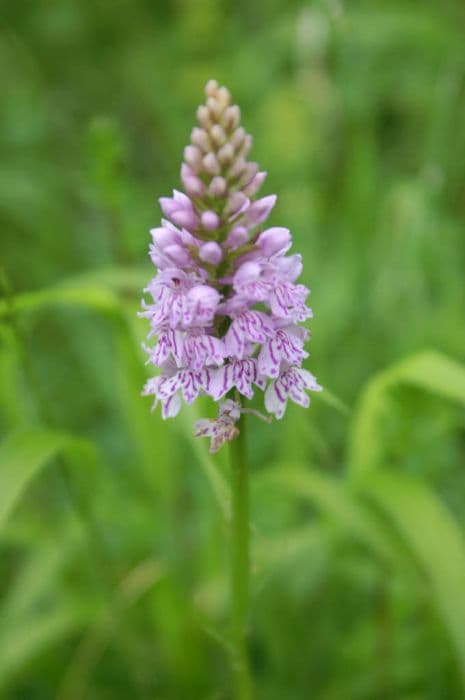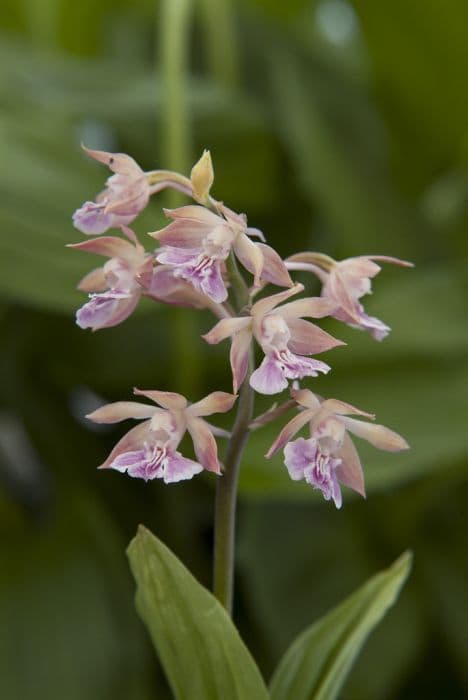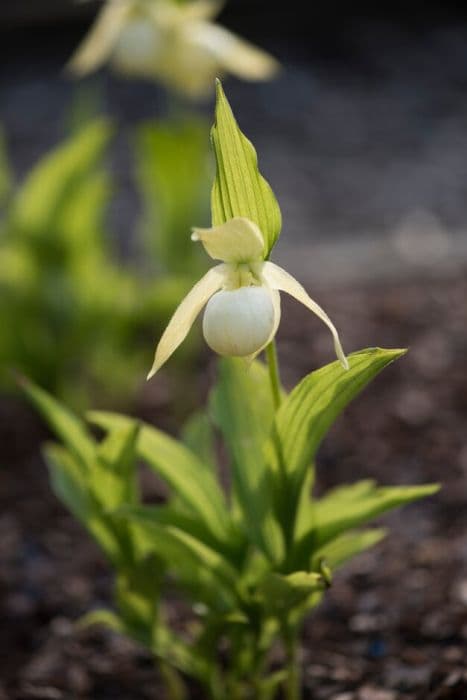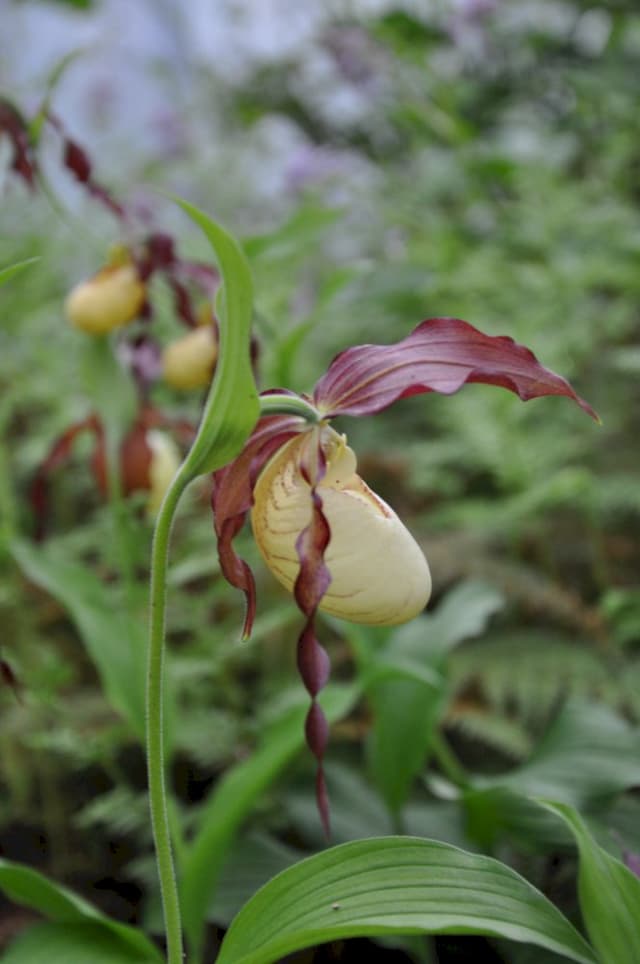Common spotted orchid Dactylorhiza fuchsii

ABOUT
D. fuchsii is an erect perennial to 60cm tall, with usually purple-spotted, lance-shaped leaves and dense spikes of purple, pink or white flowers with darker markings in late spring and early summer
About this plant
 Names
NamesFamily
Orchidaceae.
Synonyms
Common Spotted Orchid, Fuchs' Dactylorhiza, Fuchs' Spotted Orchid.
Common names
Dactylorhiza fuchsii subsp. sooana, Dactylorhiza fuchsii subsp. psychrophila, Orchis fuchsii, Orchis fuchsii var. okellyi, Orchis fuchsii var. sooana, Orchis latifolia var. fuchsii.
 Characteristics
CharacteristicsLife cycle
Perennials
Foliage type
Deciduous
Color of leaves
Green
Flower color
Pink
Height
1-2 feet (30-60 cm)
Spread
1 feet (30 cm)
Plant type
Herb
Hardiness zones
5
Native area
Europe
Benefits
 General Benefits
General Benefits- Ecosystem Support: The common spotted orchid (Dactylorhiza fuchsii) provides nectar for a variety of insects, thus supporting local ecosystems.
- Pollinator Attraction: This plant attracts bees, butterflies, and other pollinators which is vital for pollination of surrounding flora.
- Biodiversity: By being a part of local flora, the common spotted orchid contributes to the biodiversity of its habitation area.
- Aesthetics: The plant adds beauty to the natural landscape with its spotted leaves and spikes of pinkish-purple flowers.
- Educational Interest: It can be an object of interest for botanists and nature enthusiasts, aiding in education about plant biology and ecology.
- Conservation Indicator: As a native species, the presence of common spotted orchid often indicates a healthy and undisturbed habitat.
- Soil Health: Although not a primary function, like many plants, Dactylorhiza fuchsii can contribute to soil health through its natural life processes.
 Medical Properties
Medical Properties- Antidiarrheal: Common spotted orchid has been used in traditional medicine to treat diarrhea.
- Antispasmodic: The tubers have properties that can help relieve spasms.
- Nutritive: Rich in mucilage, which is thought to be nourishing and restorative.
 Air-purifying Qualities
Air-purifying QualitiesThis plant is not specifically known for air purifying qualities.
 Other Uses
Other Uses- Orchid Compost Component: Dactylorhiza fuchsii's spent growth media can be used to enrich compost mixes for other orchids, as it may contain beneficial microorganisms and residual nutrients.
- Ink Production: The plant's pigment has historically been experimented with for use in natural inks for artistic purposes.
- Educational Tool: Common Spotted Orchid is used in botanical education to explain orchid morphology, pollination strategies, and habitat requirements to students and amateur botanists.
- Photographic Subject: Its striking flowers and habitat make the Common Spotted Orchid a popular subject for nature photographers and plant enthusiasts.
- Biotope Recreation: Enthusiasts of natural aquascaping and terrarium design use Dactylorhiza fuchsii as part of European bog or meadow landscape recreations.
- Cultural Symbolism: In some regions, Dactylorhiza fuchsii is used in traditional festivals or ceremonies as a symbol of the beauty and fragility of nature.
- Artisanal Papermaking: The fibrous roots and stems may be used as a niche component in handmade paper production, offering a unique texture and appearance.
- Vegetative Roofing: The Common Spotted Orchid can be grown on green roofs in appropriate climates, contributing to biodiversity and urban ecology.
- Natural Dye: The flowers and leaves can yield a mild dye for textiles, which artisans may utilize for creating subtle hues in natural fabrics.
- Ecosystem Indicator: Its presence in a habitat can be an indicator of ecosystem health, particularly the status of calcareous grasslands and fen meadows in Europe.
Interesting Facts
 Feng Shui
Feng ShuiThe Common Spotted Orchid is not used in Feng Shui practice.
 Zodiac Sign Compitability
Zodiac Sign CompitabilityThe Common Spotted Orchid is not used in astrology practice.
 Plant Symbolism
Plant Symbolism- Resilience: Dactylorhiza fuchsii, also known as the Common Spotted Orchid, often thrives in challenging environments and varying soil types, symbolizing the ability to persevere and adapt.
- Beauty: The intricate patterns and attractive blooms of the Common Spotted Orchid represent beauty and the appreciation of aesthetics, often found in nature's minute details.
- Femininity: Orchids have long been associated with femininity due to their delicate and graceful appearance, and the Common Spotted Orchid shares this association.
- Rarity: As orchids can be rare and sought-after, the Common Spotted Orchid symbolizes that which is unique and treasured.
- Elegance: The elegant posture and form of the Common Spotted Orchid's flowers represent sophistication and a refined taste.
 Water
WaterThe Common Spotted Orchid should be watered regularly to keep the soil consistently moist but not waterlogged. During the active growing season in spring and summer, water the plant about once a week with about 16-24 ounces of water, depending on the size of the pot and the humidity of the environment. It's important to reduce watering in the dormant period, which is usually in the fall and winter, providing just enough water to prevent the soil from drying out completely.
 Light
LightThe Common Spotted Orchid thrives best in bright, indirect light. It is suited for a position that receives filtered sunlight, such as a north or east-facing window where direct sunlight is limited. Avoid placing it in direct, harsh sunlight as it can cause leaf burn and stress the plant.
 Temperature
TemperatureThe Common Spotted Orchid prefers cool to moderate temperature conditions, with an ideal range between 50-70 degrees Fahrenheit. It can survive minimum temperatures of around 40 degrees Fahrenheit but should be protected from frost. The plant should not be exposed to temperatures above 80 degrees Fahrenheit for prolonged periods as this could affect its growth and flowering.
 Pruning
PruningPruning the Common Spotted Orchid is generally limited to the removal of dead or faded flowers and leaves to maintain the plant's health and appearance. The best time to prune is after the plant has finished flowering, usually in the late summer or early fall. This allows the orchid to direct its energy towards new growth and preparing for the next bloom cycle.
 Cleaning
CleaningAs needed
 Soil
SoilCommon Spotted Orchid thrives in a loamy, well-draining soil mix with a pH of slightly acidic to neutral (pH 5.5-7). A mix of loam, leaf mold, and sharp sand can create ideal conditions for growth.
 Repotting
RepottingCommon Spotted Orchid typically does not require frequent repotting; do it every 2-3 years or when the potting mix breaks down.
 Humidity & Misting
Humidity & MistingCommon Spotted Orchid prefers high humidity levels, ideally between 70-80% for optimal growth.
 Suitable locations
Suitable locationsIndoor
Ensure high humidity and diffused light growing inside.
Outdoor
Plant in dappled shade with moist, rich soil outside.
Hardiness zone
4-9 USDA
 Life cycle
Life cycleCommonly known as the Common Spotted Orchid, Dactylorhiza fuchsii begins its life as a seed which germinates in symbiosis with mycorrhizal fungi, essential for the nutrient uptake during early development. The seed develops into a small tuberous protocorm that forms its first roots and a shoot. As the plant matures, it produces a rosette of spotted leaves each year, using photosynthesis for energy growth, while the tuber underground may split to form new growths. Floral spikes emerge between late spring and mid-summer, bearing multiple pinkish-purple flowers that are pollinated by various insect species, following which the seeds are dispersed by wind. After flowering, the leaves die back, and the plant goes into a period of dormancy, surviving off the stored energy in its tubers throughout the winter. With the onset of spring, the cycle resumes, with new growth emerging from the tubers as the next growing season begins.
 Propogation
PropogationPropogation time
Spring-Early Summer
The Common Spotted Orchid, or Dactylorhiza fuchsii, is best propagated by division. This method usually takes place after the plant has finished blooming, around late summer to early fall. Division involves carefully splitting the plant's tubers into smaller sections, each retaining a portion of the roots and at least one growth point. These divisions can then be replanted immediately into a suitable growing medium that's well-draining and where conditions mimic their natural environment. This method of propagation helps to maintain the genetic characteristics of the parent plant while also encouraging a quicker establishment as compared to starting from seeds.









